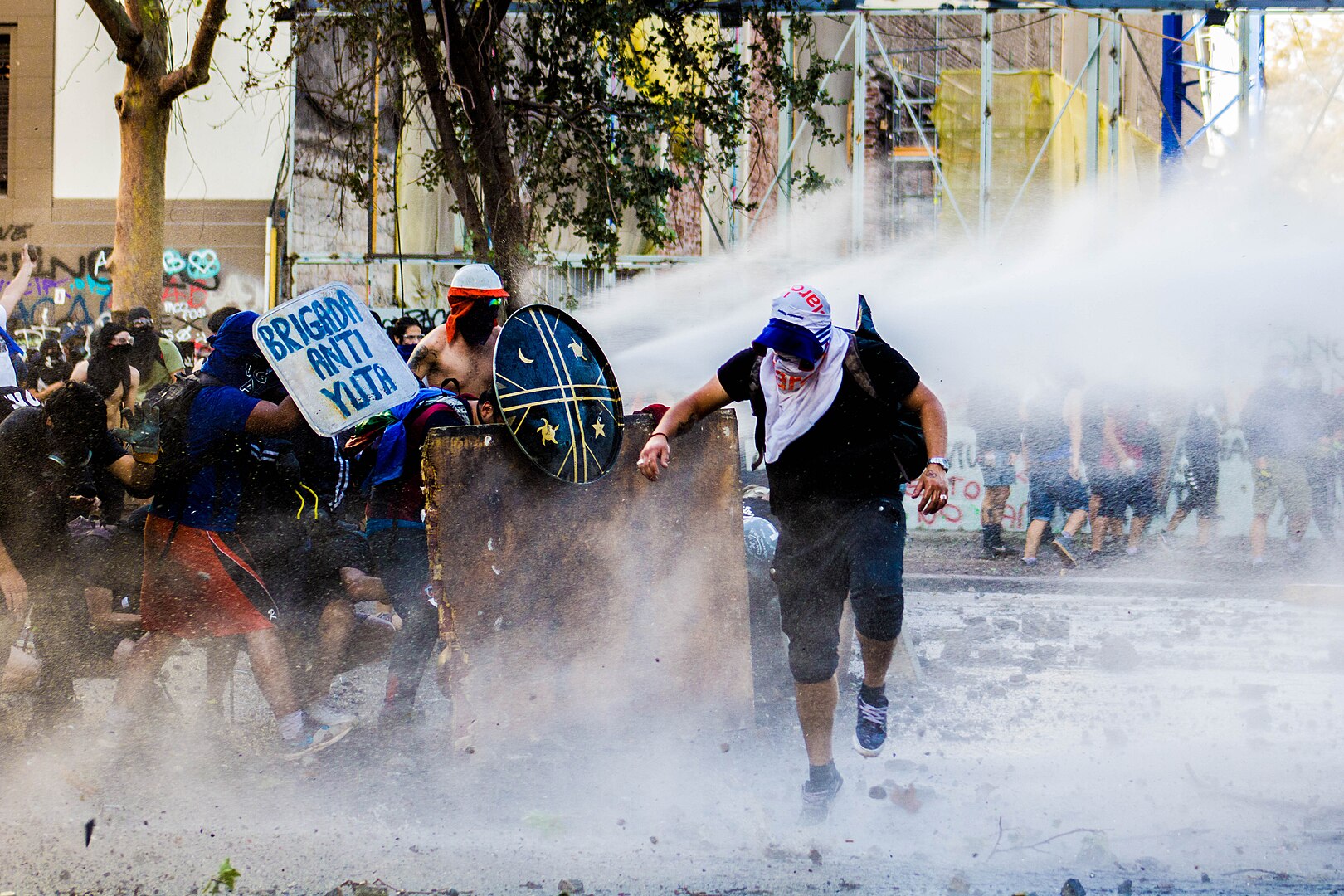The following is an excerpt adapted from Defying Displacement: Urban Recomposition and Social War (IAS/AK Press, 2024).
Appropriating the planet
In a fragment by Jorge Luis Borges, successive generations of cartographers create increasingly exacting maps of China. Their maps grow steadily larger to incorporate more and more minute details until “the Cartographers Guilds struck a Map of the Empire whose size was that of the Empire, and which coincided point for point with it,” for the only map that could communicate every detail of China would be a map on the scale of the country itself. Today, the Chinese maps are even larger than the empire.
The commanding heights of the gentrification economy are tech and biotech firms that collect, systematize, privatize, and commodify inputs such as genetic data, personal information, and behavioral profiles at levels far beyond that accessible through first-person experience: the stuff of ever-growing maps, new material for market exchange. The more perfect these maps, whether of a user’s consumer proclivities or genome, the more profits may be wrung. These inputs are not initially purchased from another party. Instead, as Shoshana Zuboff explains, “Surveillance capitalism unilaterally claims human experience as free raw material for translation into behavioral data.”

For Marx, capitalism is necessarily based in primitive accumulation, the “conquest, enslavement, robbery, murder, in short, force” necessary for one class to acquire capital and for another to be dispossessed to the degree that it must sell its labor to survive. Marx placed this initial violent accumulation in the late 15th and 16th centuries, when English peasants were forced off feudal lands and Indigenous American and African peoples were enslaved.
Peter Kropotkin was quick to critique Marx’s “erroneous division between the primary accumulation of capital and its present-day formation.” Later Marxists likewise found that primitive accumulation was not a bounded historical event but an ongoing process. Silvia Federici cites World Bank structural adjustment programs which, under the guise of making poor countries “competitive,” uproot the “last vestiges of communal property and community relations” and “force more and more people into wage labor” as one example and the exploitation of women’s unpaid domestic labor another. The social, biological, and psychological data now closed off and privatized by capital are a new frontier of such accumulation.
The material limit of appropriation of land is the amount of existing acreage, just as the material limit of the appropriation of iron ore is the quantity found in a certain mine. The gentrification economy is based on the modeling and mapping of the world; its material limit is the representation of the world down to the atomic level. So long as this endeavor remains profitable and requires a small caste of educated technicians, the gentrification economy and the struggles against displacement may only be expected to continue.
User, subject, worker, resident
There are at least three lines of popular political critique of the tech economy aside from resistance to community displacement. One critique of tech companies concerns their management of platforms that serve as a semi-public space. The prohibition or promotion of certain content or communities is criticized from the perspective of users. There is also a line of critique from the perspective of those subjected to new forms of power: quantified, mapped, and modeled. And warehouse workers, rideshare drivers, and software engineers alike criticize their tech industry employers from the perspective of workers. The struggle against gentrification is a critique of a fourth type. In addition to the user, the subject, and the worker, there is the resident. The Block Sidewalk campaign in Toronto joined an anti-gentrification fight to concerns about surveillance technology and U.S. corporate encroachment: resistance on the terms of the subject as well as that of the resident. The fight to kill Amazon’s New York campus highlighted both how housing costs would rise and how few local residents would get high-paying jobs: the resident and worker. The fight against Google Berlin pulled together opposition “from the displacement of the neighborhood, through data abuse of Google, to criticism of power and technology,” the synthesis of such critiques “made possible by a shared intensification of a social conflict.”
From the perspective of the ruling class, existing residents are residual, remainders, leftovers. “Join the dance of those left over,” goes the Los Prisioneros song, an anthem of the movement against Pinochet that found new life during Chile’s 2019 Estallido Social. “The games ended for others with laurels and futures. They left my friends kicking stones.”

Common sense militancy
It is hard to imagine a demand more modest than the maintenance of one’s home, community, and life. And yet to stop displacement would demand, housing activist Vasudha told me, “a reimagining of the current socio-economic system, because as it currently exists, gentrification is incentivized and encouraged until every cent of profit is milked out. The last 200 years of housing policy and how the ‘market’ works is encouraging and incentivizing gentrification. To stop it will require masses of people to really come together and pitch in and make sacrifices to a larger movement to restructure the socio-economic system as it currently exists.” The reasonable demand for universal housing in an economic system based on private land ownership is a “non-reformist reform” in the original sense outlined by André Gorz: not an especially progressive reforms to demand of the capitalist state, as the democratic socialists would have it, but an apparent reform that in fact could only be instituted by a “fundamental political and economic change” created through the “autonomous power” of the dispossessed.
We must unfortunately still contend with those whose superficial concern for the oppressed is outweighed by a greater fear of the oppressed developing just such an autonomous power. Neither the benevolence of corporate charity nor the “proper channels” offered by local representative democracy have proven, in any city in the world, sufficient to halt economic gentrification. Yet the partisans of propriety and moralists of reform continue to insist that those facing displacement and death restrict themselves to permissible tactics proven to fail. And so homes continue to be destroyed and our neighbors continue to expire on the streets. The hands of the self-declared pacifists drip with blood as their throats fill with empty platitudes. Those who demand decorum and reasonableness in resistance are accessories to the most indefensible outrages.
“I don’t know that we can challenge gentrification on political terms,” says Daniel González of San José. “It’s going to require a lot of militancy. Not just militancy, because you need a multi-faceted approach to enable greater participation. But you do need to have a very real and material threat to the stakeholders, to the city, to the investors. It needs to go beyond the arena of representative politics.”
Andrew Lee is the author of Defying Displacement: Urban Recomposition and Social War. Lee has supported grassroots social movements for more than 15 years and his work has been published in outlets including Teen Vogue, Yes! Magazine, and The New Inquiry. He writes at In Struggle and is a board member of the Institute for Anarchist Studies.

